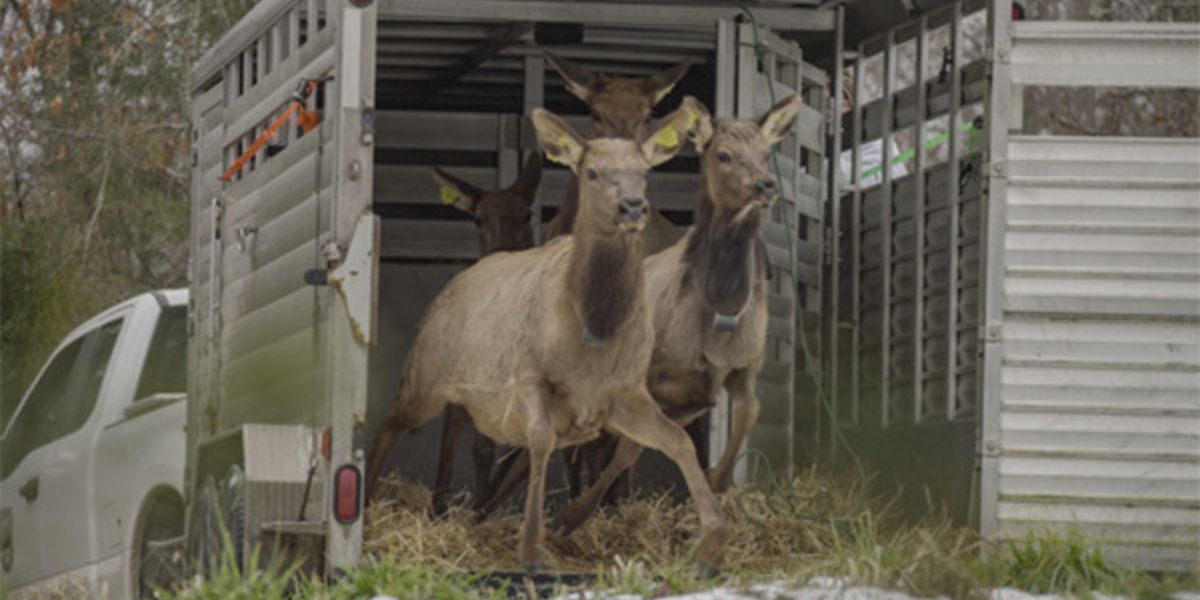The Kentucky Department of Fish and Wildlife Resources has received the Wildlife Society’s 2023 Wildlife Restoration Award for elk reintroduction and management in southeastern Kentucky.
Kentucky’s elk program has been recognized as one of the most effective wildlife restoration efforts in US history. Kentucky Fish & Wildlife translocated 1,541 elk from six western states between 1997 and 2002 to develop what is today the largest herd of the species east of the Rocky Mountains. Kentucky’s elk herd offers the most diverse options to hunt or observe the species in the eastern United States.
In 2022, Kentucky Fish and Wildlife completed the final significant stage in its elk restoration efforts by relocating 43 live-trapped animals from nearby counties to McCreary County, the final county in the designated elk zone to have year-round elk residents. All 16 counties in the state’s elk range now have a healthy and sustainable population.
“I’m extremely proud of our staff, current and past commission members, and partners such as the Rocky Mountain Elk Foundation and local government officials who have supported our elk program in a variety of ways,”said Rich Storm, commissioner of Kentucky Fish and Wildlife.
“This award salutes the combined efforts of everyone involved in our elk restoration efforts through the years, from boldly envisioning it in the mid-1990s to continued enhancements through research, habitat improvement, and public access today,” he said.

In Kentucky, elk had been extirpated (rendered locally extinct) by around 1850. The species, like most other large animals, was destroyed during westward expansion because of rapid habitat degradation, commercial exploitation, and unregulated hunting.
Science-based wildlife conservation has enabled state and federal wildlife agencies, such as Kentucky Fish and Wildlife, to actively restore numerous formerly extinct or endangered species. In addition to elk, other highly successful wildlife restoration initiatives in Kentucky have included white-tailed deer, wild turkeys, river otters, bald eagles, and peregrine falcons.
More than 500 species of fish, wildlife, and native plants are listed as “species of greatest conservation need” in Kentucky’s current State Wildlife Action Plan, the blueprint for restoring the Bluegrass State’s most endangered fauna and flora. Kentucky Fish & Wildlife intends to change the course of these species through targeted collaborations and restoration efforts.
Recent wildlife restoration attempts have included native freshwater mussels and hellbenders, Kentucky’s largest salamanders.
The award was presented at The Wildlife Society’s annual meeting in Louisville in November. The award recognizes the Wildlife Restoration program, which was established by the Pittman-Robertson Act to provide critical federal funds to state wildlife agencies.
The Wildlife Society is an international wildlife professional organization. Wildlife biologists who meet rigorous criteria for university education and documented experience in the field of wildlife conservation or research are certified by the society. In addition, it publishes key research journals and professional communications, advocates for public policy in accordance with its goal, and promotes professional growth through its conferences and activities.
Each year, hunting generates more than $1.3 billion in economic value in Kentucky. Elk hunting expenditures alone generate more than $3.5 million in economic benefit to local economies each year.
Through its yearly randomized hunt drawing, Kentucky Fish and Wildlife issued almost 600 elk hunting permits to eligible applicants in 2023. Elk hunters go from all across Kentucky and the country to scout and hunt.
The purpose of Kentucky Fish and Wildlife is to conserve, protect, and enhance Kentucky’s fish and wildlife resources while also providing great opportunities for hunting, fishing, trapping, boating, shooting sports, wildlife viewing, and other associated activities. The organization is primarily supported by user fees like hunting and fishing permits, boat registration fees, and federal subsidies. A Kentucky Wild membership provides funding that directly protects sensitive species in Kentucky that are under threat.

Leave a Reply